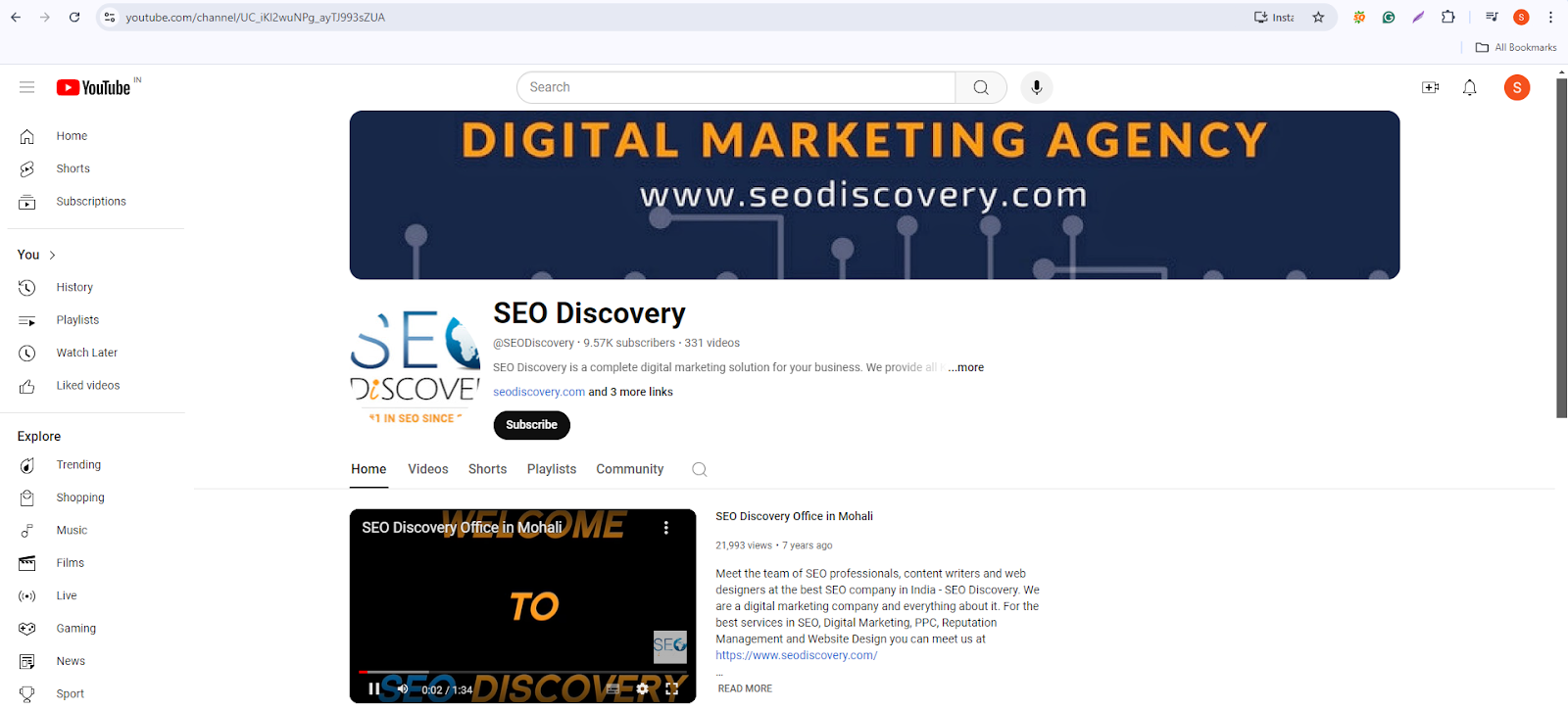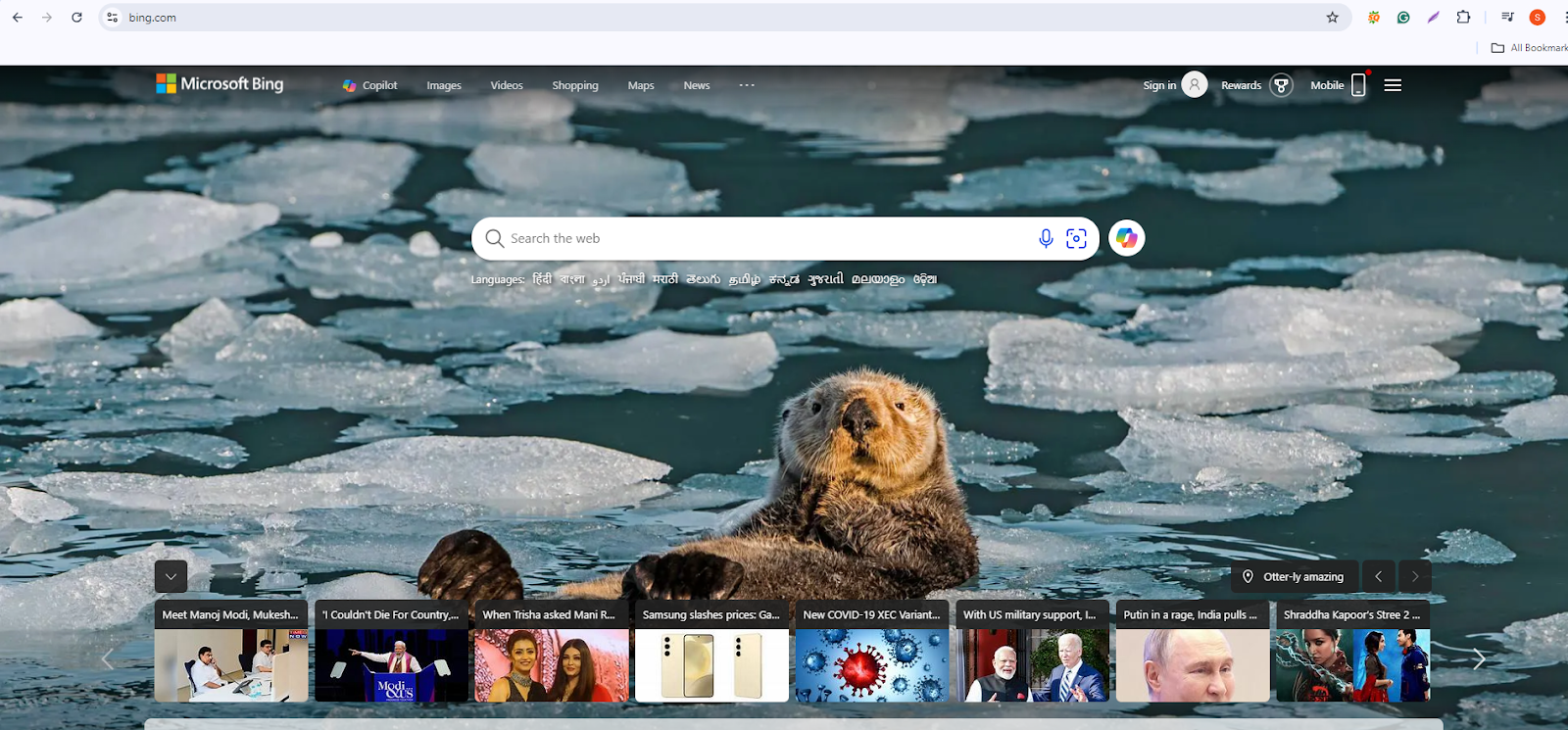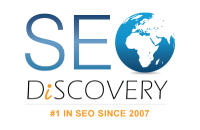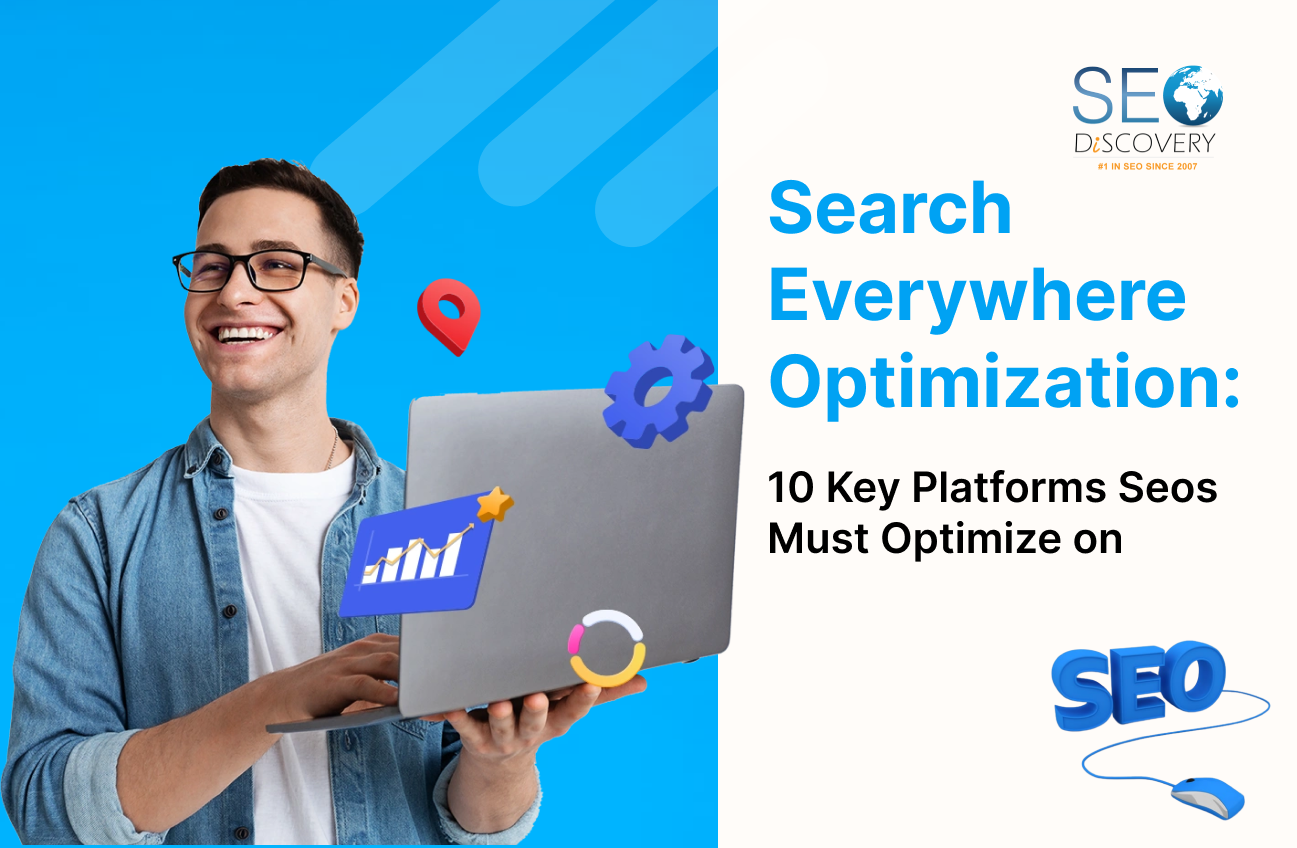We all know what search engine optimisation is, but what’s this new SEO all about? Why is it stealing the spotlight?
The new SEO, or “Search Everywhere Optimization,” goes beyond optimizing for Google. It means that people no longer depend on Google searches for specific information. They will search across multiple platforms, not just search engines.
Thus, SEOs need to step up and ensure their strategies cover every platform where users are looking – from social media and e-commerce sites to voice assistants.
In this article, we’ll explore Search Everywhere Optimization: 10 key platforms SEOs must focus on to optimise for today’s digital landscape truly.
10 Key Platforms For Search Everywhere Optimization Seos Optimize
1. Google Search
Google is the best in the search engine world, with more than 90% global market share of the total. No matter if people are looking for goods, services or pieces of information, they generally first search through Google. This is the crucial reason why designing your website in a way that is attractive to Google is the most valuable thing you can do. By using SEO, creating high-quality content, and building backlinks, you increase your chances of being seen by the largest audience possible. Plus, ranking higher on Google helps boost your credibility and attract more visitors. So, focusing on Google optimization is a key step to growing your online presence and reaching more potential customers.

Data Support: Studies show that 75% of users never scroll past the first page of search results, so it’s critical to rank high if you want to be noticed (source: Backlinko). If your content isn’t showing up on the first page, you risk losing out to competitors.
2. YouTube
As the second-largest search engine in the world, YouTube is a key platform for any SEO strategy. So, to improve your business visibility, make sure to engage with the practice of YouTube SEO. It will get your videos seen and also have an impressive impression beyond youtube. Video content is becoming increasingly popular, and optimising your video titles, descriptions, tags, and thumbnails can greatly improve your visibility. From product reviews to tutorials, YouTube is where many people go to search for video-based answers.

Data Support: With over 2 billion logged-in monthly users and a high engagement rate, YouTube presents an immense opportunity for businesses to reach their audience through video (source: YouTube). Additionally, videos often appear in Google’s search results, giving you another way to boost your presence.
3. Amazon
For eCommerce businesses, Amazon is not just a marketplace but a product search engine. Some purchases are so straightforward that customers might just skip Google and come to Amazon straight away. To fix the listings of your items with the relevant keywords, images, and descriptions, that will make them easily discoverable by the consumer.
Data Support: More than 49% of customers who go shopping online on Amazon start their product surveys, which is more than Google when it comes to eCommerce. The presence of optimized Amazon listings for businesses on the internet is important. They have to be at the top of the page while keeping their optimization in place.
4. Bing
Although Google is the undisputed king, Bing still holds a considerable share of the search market. Some users, particularly those using Microsoft products, default to Bing for searches. If you’re optimizing only for Google, you may miss out on a portion of your audience. Bing’s algorithms are different from Google’s, so businesses must adjust their SEO strategies accordingly.

Data Support: Bing controls 6.5% of global search traffic, and with over 1 billion monthly visits, it’s a platform worth considering. Additionally, Bing has been known to drive higher conversion rates for some industries, which makes optimization even more attractive.
5. Facebook
Facebook’s position as one of the most well-liked social media sites on the dig has been firm. Companies rely on it to communicate with their client base. Optimizing your Facebook page, posts, and ad campaigns not only boosts your visibility within the platform but can also help you appear in Google searches well-kept Facebook page allows your business to act as a second website, enabling users to connect with your brand indirectly.
Data Support: Facebook boasts 2.96 billion active users monthly, making it a goldmine for businesses looking to tap into social media marketing and organic search within the platform (source: Meta).
6. Instagram
Instagram’s visual content makes it a sought-after player in sectors such as fashion, beauty, travel, and e-commerce. Make your profile the best it can be through the aid of the proper hashtags and high-quality posts, and you can rise in both engagement and the number of visits to your store or website. Instagram is keyed to a high level of interaction and therefore, interaction is key for your content to be seen by more people. The more the user’s interaction your content enjoys, the more probable it is to be seen by a broader audience, as rank is community-engagement-based.
Data Support: With 1.39 billion monthly users, Instagram presents businesses with a huge opportunity to build their brand and drive traffic through visual storytelling.
7. Pinterest
Pinterest is a powerful visual search engine where users go to discover products, ideas, and inspiration. If your business offers visually appealing products or services, optimizing for Pinterest can drive significant traffic to your website. Keywords, image descriptions, and categories are all important for Pinterest SEO.
Data Support: Pinterest sees over 2 billion monthly searches, and users are often in a buying mindset. Optimizing your pins and boards is key to being discovered by your target audience (source: Pinterest).
8. LinkedIn
Why Optimize: LinkedIn is the go-to platform for professionals and B2B companies. Optimizing your LinkedIn profile, posts, and company page is essential if you’re looking to network with industry leaders, attract new clients, or find job opportunities. The platform’s search engine favours profiles that are complete, active, and engaged
Data Support: With 930 million members worldwide, LinkedIn is an indispensable tool for building a professional brand, attracting new business, and engaging with decision-makers (Source: LinkedIn).
9. Yelp
One of the most well-liked review platforms for local companies is Yelp, particularly for those in the food, retail, and home services sectors. Many consumers read reviews on Yelp before making a purchasing decision. Optimizing your Yelp profile by adding updates, answering reviews, and completing any business-related information can increase your exposure and trustworthiness.
Data Support: Yelp receives 178 million unique visitors per month, making it an important platform for local SEO and business credibility (source: Yelp).
10. TikTok
TikTok has exploded in popularity, particularly among younger audiences. For businesses targeting Gen Z or millennials, TikTok is a must. The platform’s algorithm is unique in that it surfaces content based on engagement and watch time, so optimizing your videos with hashtags, trends, and strong calls to action can help your content go viral.
Data Support: TikTok’s rapid growth to 1 billion monthly users makes it one of the fastest-growing platforms for brand engagement, with the potential to reach massive audiences in a short period of time (source: TikTok).
Final words!
To wrap things up, optimising for search goes way beyond just Google these days. To really stand out, SEOs need to focus on a mix of platforms—whether it’s YouTube, Amazon, social media, or even app stores. Each of these platforms has its own way of ranking content, so it’s important to adapt your strategy for each one. By spreading your optimization efforts across these 10 key platforms, you’ll reach a wider audience, boost your visibility, and keep your brand strong in today’s competitive digital world.


